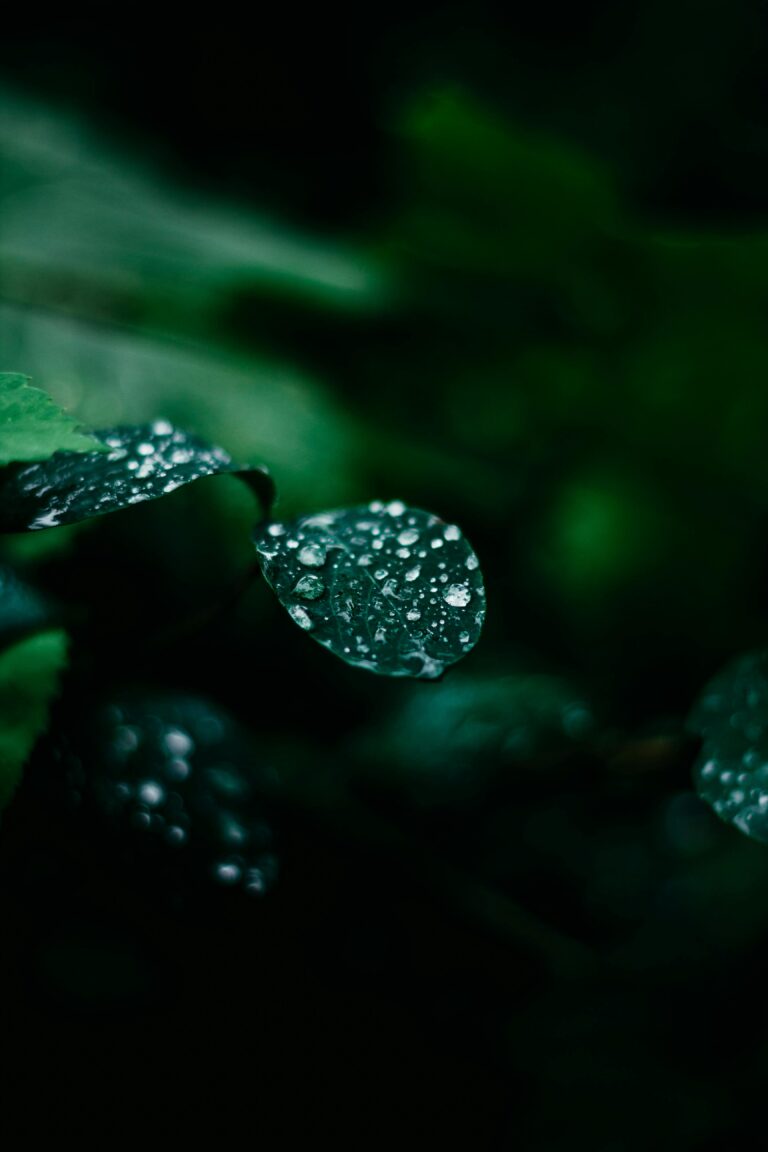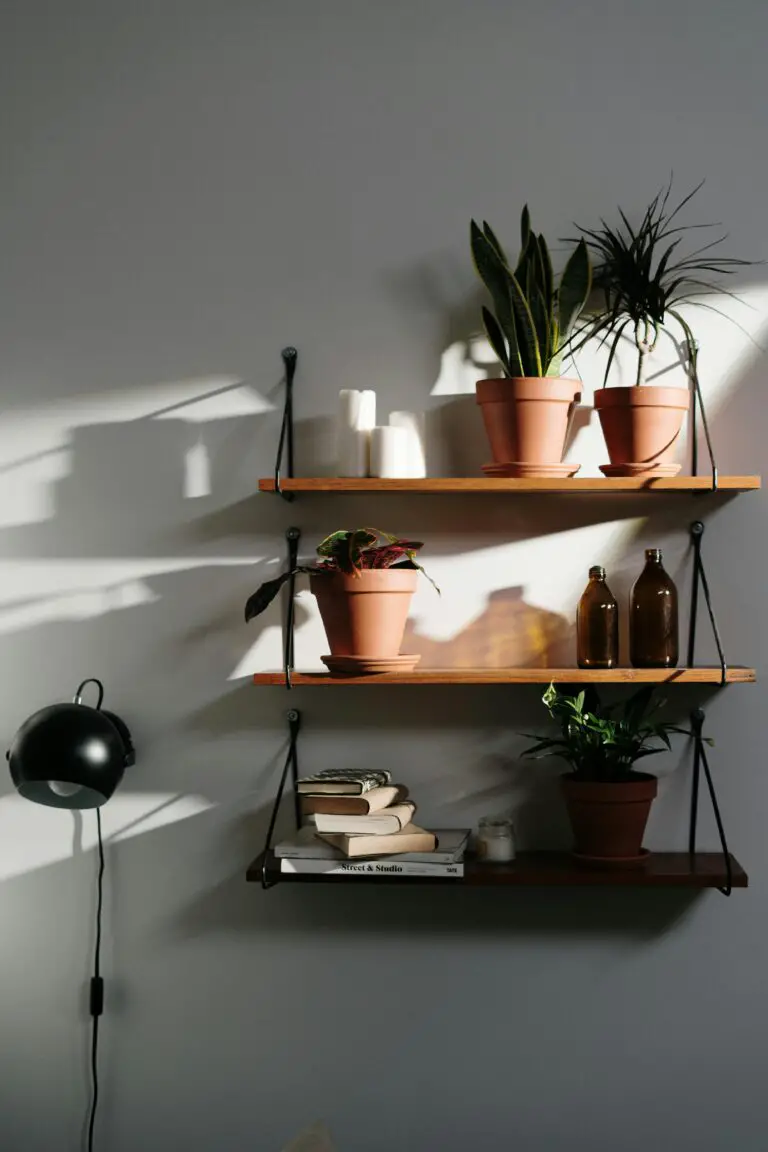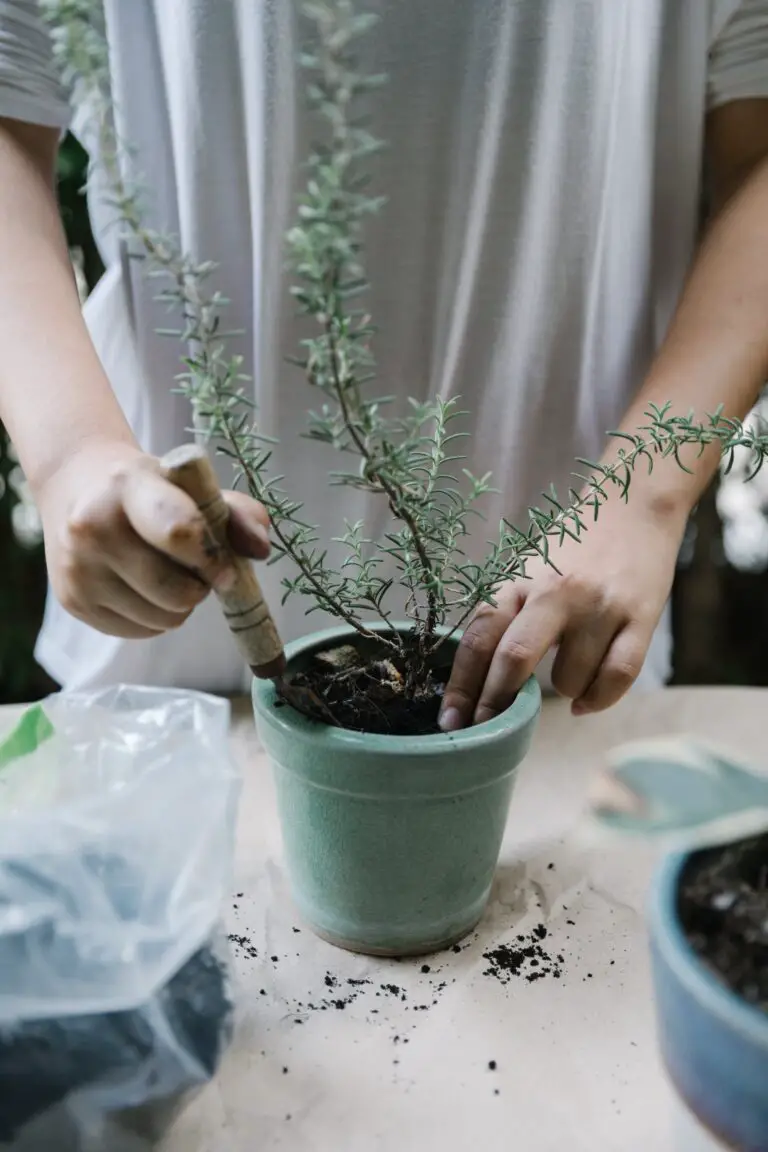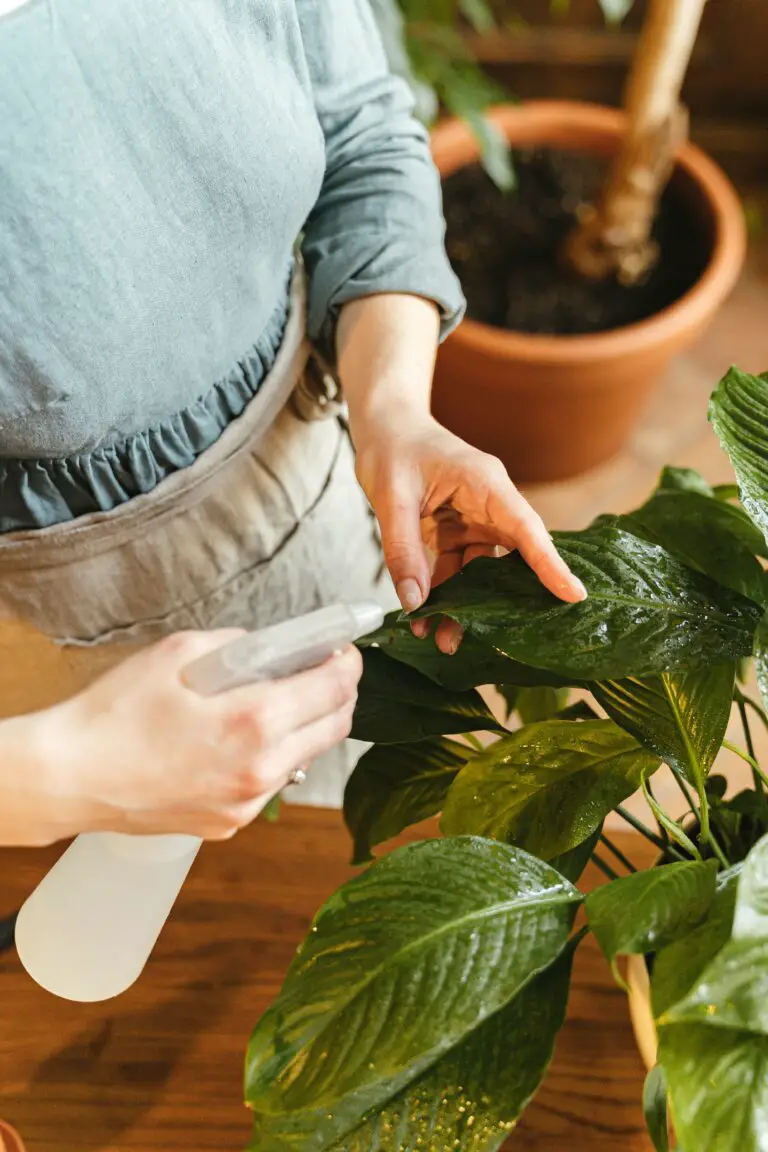Introduction to Sedum: Nature’s Resilient Beauties
Welcome to the succulent world where Sedum plants reign as the low-maintenance monarchs of the garden! These hearty little performers are the talk of the town amongst green-thumbs and novices alike, beloved for their rugged charm and persona of ‘thriving on neglect.’
Imagine a plant that asks very little but gives back so much. That’s Sedum for you! Picture this: a sun-drenched rockery or a rooftop garden where these versatile jewels colorfully sprawl, unfazed by the harsh rays. They’re the survivalists in the plant kingdom, often needing just a sip when others demand a gulp – a stoic bunch in a world that doesn’t stop to water the flowers.
As we delve into the thirst-quenching specifics, we invite you to stroll through our guide brimming with tips that’ll ensure your Sedum stays splendid. From your stonecrop’s subtle hints of thirst to establishing a watering rhythm that mimics Mother Nature’s tune, we’re here to turn your questions into actionable green wisdom.
So, buckle up, plant enthusiasts! It’s time to empower you with the know-how to water your Sedum just right. By the time you finish reading, you will be a bonafide expert in making sure your Sedum is never parched nor drowned, but perfectly quenched.
Understanding Sedum’s Natural Habitat and Watering Needs
Have you ever wondered how the resilient Sedum plants manage to look so perky and fresh even when everything around them is withering away? These hardy succulents are masters of survival, and it’s all thanks to the natural habitat they hail from.
The Sedum species, also known as “stonecrop,” is no stranger to tough conditions. Originating from rocky slopes and mountainous regions, they’re accustomed to areas where soil is more myth than reality. In these rugged landscapes, rainfall is like a celebrity appearance—anticipated but rare. Sedums have adapted to these environments like a cactus to a desert, storing water in their fleshy leaves and stems, ready to withstand periods of drought. This ability allows them to thrive in locations where “fussy” plants wouldn’t stand a chance.
So, when we whisper the secret to watering these succulent beauties, it’s really simple: less is more. Mimicking their natural conditions means allowing the soil to dry out completely before giving them a thorough soak. It’s like throwing a feast after a period of fasting—the Sedum plants will greedily drink up, storing the moisture for the sunny (or not so sunny) days ahead.
Imagine this: a Sedum basking in the morning sun, its vibrant colors catching the eye of every passerby. It’s the poster child for low-maintenance glamour. To keep your Sedum looking magazine-cover ready, understanding their watering needs is key—think of it as keeping up with the ‘succulent’ Kardashians of the plant world. If you’re hungry for more juicy details on caring for these fascinating plants, our guide on thriving succulent care unveils all the secrets!
Lest we forget, these are modern days, and who doesn’t love a good visual guide? Here’s a video that dives into the enchanting world of Sedum, giving you a splash of insight into their watering requirements:
In essence, watering your Sedum isn’t about sticking to a rigid schedule, but rather adopting a thoughtful approach that echoes their natural inclinations. It’s about becoming in tune with their succulent souls and offering water as a treat, not a daily routine. By doing so, you’re not just quenching their thirst, you’re honoring their heritage. And that, dear green-thumbed readers, is how you help these tenacious troopers of the plant kingdom flourish.
Types of Sedum and Varied Water Preferences
Imagine a world where every sedum plant thirsts for the same amount of water—it would be a gardener’s utopia, right? But no, nature loves variety, and sedum plants are as diverse in their water preferences as they are in their stunning forms and hues. From the plump, juicy leaves of the ‘Autumn Joy’ to the delicate, evergreen clusters of ‘Angelina,’ the sedum family exhibits a dazzling variety of water needs. Let’s dive into this succulent world and explore how not all sedums sip the same.
Take the case of ‘Sedum spurium,’ a tough-as-nails character that thrives on neglect, basking in full sunlight while requiring minimal water. A mere sip now and then keeps these ground-hugging beauties content. Contrast that with the ‘Sedum telephium,’ commonly known as ‘Matrona,’ which prefers its soil to stay evenly moist, yet still well-drained to avoid waterlogged roots.
Understanding these differences isn’t just about keeping them alive; it’s about helping them flourish and showcase their best selves. For helpful visuals on watering these diverse beings, check out this . It’s a great starting point for grasping the basics of watering these plump-leaved wonders.
You might think, “But wait, surely there’s a universal watering truth for all sedums?” Well, not quite. Here’s a morsel of wisdom—each sedum’s watering need often mirrors its native habitat’s climate. The sedums hailing from arid zones are the camel-like survivors requiring infrequent water, while those from cooler climes seek a drink more often. Hungering for more insight? Cast your eyes upon this informative succulent watering guide that unmasks the art of hydration.
If unraveling the mysteries of sedum varieties sparks your curiosity, celebrating your eco-friendly gardening spirit will surely be amplified by exploring your local nursery’s collection, or perhaps visiting a virtual gateway to sedum diversity here.
In the tapestry of sedum varieties, each thread has its own unique color and texture, and knowing how to water them correctly is like selecting the perfect hue for your garden’s masterpiece. So, allow yourself to bask in the glorious diversity of the sedum kingdom: cherish the water-wise, relish in the moisture-loving, and embrace each plant’s individual quirks. Just remember, letting the soil guide you will quench your sedums’ thirst just right.
How to Determine When Your Sedum Needs Water
Thumbing through the pages of your gardening journal, you might wonder—when was the last time I watered my sedum? Understanding the hydration needs of sedum plants doesn’t require a Ph.D. in botany, just a bit of savvy observation. Let’s dive into the tell-tale signs that your green friend is thirsty or, on the flip side, swimming in too much H2O.
Spotting a Thirsty Sedum
Visual cues are your first line of defense against sedum dehydration. When your sedum’s leaves begin to look about as parched as a sunbaked desert, you’ll know it’s high time for a drink. Think of them like the plant’s version of hands reaching out for water. These plump leaves will start to lose their vigor, look deflated, and sometimes take on a slightly translucent hue. If you ignore these SOS signals, you might find the leaves getting crispy, akin to fallen autumn leaves crunching underfoot—something no gardener wants to ambush their succulent sanctuary.

Drowning in Excess: Overwatering Woes
While sedum plants adore a good quench, an aquatic abundance can lead to a soggy disaster. Imagine walking in rain-sodden sneakers all day—that’s how sedum feels with too much water. Keep an eye out for leaves that turn as mushy as overcooked veggies or begin to yellow and fall off easier than autumn leaves drifting from a tree. Root rot, the underworld villain of overwatering, rears its ugly head subtly. Before you know it, the roots are as brown and soft as rotting wood—definitely not the sturdy anchors your sedum desires.
Be the garden Sherlock Holmes: understanding the delicate balance between too little and too much water is key for successful sedum cultivation. Remember, your sedum plant’s plump leaves are reservoirs in their own right; they’re designed to withstand some drought. Timing is everything—water deeply but infrequently, letting the soil dry out between sessions, ensuring you’re not turning your succulent into a sponge. Monitoring and adjusting to your sedum’s needs will keep it as resilient and splendid as you’d expect from such a hardy, drought-resistant gem.
Best Practices for Watering Sedum
When it comes to hydrating your sedum, think of it as a desert native thrown into your garden—resilient, but appreciating a thoughtful sip. Imagine standing under the scorching sun; you’d crave a drink, right? Sedum, with its succulent leaves, stores water to get through dry spells, yet it still needs our help to thrive, especially when facing a heatwave or settling into a new home.
Now, let’s dive into the nitty-gritty of sedum how much water they actually need. Firstly, it isn’t just about quantity; it’s the timing that’s key. Water your sedum during the cooler parts of the day, early morning or late afternoon, to avoid quick evaporation and give roots time to soak it up. Also, consider the climate you’re in—sedum in Arizona will have a different thirst level compared to one chillin’ in Maine.
Next up, the seasonal switch-up. Just like we swap out wardrobes, sedum needs a watering regime change. In sweltering summer, it’s high noon for hydration, while in winter, it’s more of a hibernation mode. That means easing up on the watering can when the temperature drops, as your sedum tucks in for a cool nap.
And let’s talk about plant condition—newly planted sedum are the teenagers of the plant world, needing more attention and regular watering until they get their roots down. Mature sedum, on the other hand, are the cool, independent types that only need a check-in now and then. Whether it’s building new friendships with the soil or hanging out with old pals, each stage has its own water needs.
For a more visual guide on keeping your sedum perfectly parched, check out this video:
Remember, folks, watering your sedum isn’t rocket science, but it does take a little love and logic. With these tips, your sedum won’t just survive; they’ll thrive, painting your garden with their vibrant, drought-resistant beauty.
Watering Sedum in Pots vs. in the Garden
When it comes to hydrating your sedum, the setting is everything. Imagine two chefs: one in a bustling restaurant kitchen, the other cooking over a campfire. Each must adapt their cooking to their environment, and the same goes for watering your resilient sedums. Let’s dive into the thirst-quenching tactics for both potted sedum heroes and their in-garden counterparts.
Hydration Haven: Potted Sedum Prerequisites
Potted sedums are like the high-fliers of the plant world – traveling in the safety of their own little eco-jet. But with great pot power comes great watering responsibility. These succulent buddies in pots need a watchful eye to make sure their soil doesn’t dry out like last summer’s beach towels. The catch? Overwatering is the silent adversary, leading to root rot faster than you can say ‘soggy succulent’. So, to keep your potted sedum singing in hydration harmony, think of a precise bartender: measure the water exactly right, factoring in pot size, soil mix, and those sneaky drainage holes.

The Great Outdoors: Sedum in the Garden
Meanwhile, back at the ranch – I mean, the garden – sedum planted in the ground enjoys the freedom of the great outdoors. Think of these plants as the rugged adventurers, often content with the natural rainfall and the land’s embrace. They’re the low-maintenance friends we all seek, asking for a drink only when the soil’s been parched by a week of summer’s sun. With soil that holds secrets to moisture retention, these in-ground sedums are the survivalists of the succulent world, often thriving with neglect that would make a houseplant weep.
So, whether your sedum’s home is in a cozy pot or sprawling in your backyard Eden, water them with wisdom. Know their individual quirks and environment, and you’ll have a verdant vista or a potful of joy bursting with life. Remember: the right sip at the right time makes for the happiest sedum of them all.
Avoiding Common Watering Mistakes with Sedum
Sedums, with their fleshy leaves and hardy demeanor, might trick you into thinking they can handle any amount of water you throw at them. But wait – that’s a one-way ticket to Soggy-Leaf City! Overwatering is the most common slip-up sedum parents make. Roots get more than they bargained for, leading to rot and a compromised plant. So, how do we sidestep this watery pitfall? It’s all about restraint and routine. Give your sedums a drink only when the soil says “Aye, I’m parched!” – usually every few days during active growth, and even less during their dormant winter phase.
Picture this: you’re admiring your thick-leaved beauties, and you notice the leaves getting a bit wrinkly. That’s sedum for “Hey, I’m thirsty!” But here’s where many enthusiasts get it twisted – soaking them won’t solve the wrinkle woes. Instead, a moderate quench will suffice. Provide a sip, not a swim, ensuring the soil dries between drinks. To master the technique, you might want to take a peek at a succulent watering guide that unlocks the secrets to hydration harmony.
Another faux pas to flag is the blanket approach – watering all your plants on the same schedule. Sedum varieties are as diverse as the colors in a sunset, each with unique thirst levels. Keep a keen eye on your individual sedum’s soil moisture and you’ll be golden. Remember, the mantra is “Check, then water,” not the other way around!

Let’s also untangle the myth that more water equals speedier growth. Sedums are not career sprinters; they excel in the marathon, growing steadily without a rush of water. Mimic Mother Nature – she knows her stuff, providing sporadic, not constant, downpours. This encourages sedums to develop robust root systems, reaching deeper into the earth for moisture and ultimately leading to a hardier, more self-sufficient plant.
So, keep your watering can in check, your eyes peeled on the soil, and your sedums will be showing off their succulent, water-wise smiles in no time!
Incorporating Mulch and Other Water Retention Methods
Mulch is to a sedum’s roots what a cozy blanket is to us on a chilly night—it offers protection, conserves moisture, and gives that beloved sense of security. But how exactly does mulch help our sedum friends in terms of water retention? Let’s imagine a hot, sunny day: the soil is baking, and water is evaporating at the speed of light. Enter mulch, the superhero caped in various forms be it organic straw, shredded bark, or even river rock. This sidekick not only shields the soil from the relentless sun but also reduces the need for frequent watering. Better yet, it discourages the growth of those pesky weeds vying for the same precious moisture.
It’s like that neighbor who has the perfectly sculpted yard; it’s not just for looks. The added benefit of mulch includes keeping the soil cooler and creating a more stable environment for the roots to thrive. In the scorching summer months, a sedum can sip rather than guzzle, maintaining the gentle hydration it prefers.
Anecdotes abound about gardeners who, after incorporating mulch into their sedum sanctuaries, have seen not just surviving but thriving plants. Take Joan, for instance, who lives in the high desert. After adding a 2-inch layer of composted bark mulch around her sedum collection, she noticed a dramatic reduction in the watering schedule—a godsend in an area where water is as precious as gold.
And what about soil amendments? Oh, they’re the unsung heroes of water management. Organic matter, such as compost or leaf mold, can be mixed into the soil to improve its structure, which in turn allows for better water retention without waterlogging the tenacious roots of your sedum plants. This is like that amazing high-tech fabric which keeps athletes dry—it lets soil hold onto the right amount of moisture while still providing the drainage sedums desire.
Whether you’re dealing with heavy clay that needs loosening up or sandy soil that’s as thirsty as a marathon runner, there’s a soil amendment that can help. The goal? To ensure your sedum gets the right amount of water—not too much, not too little, but just perfect, like Goldilocks’ ideal bowl of porridge.
So, it’s not just about how much water sedum plants need; it’s also about how we deliver that water. Remember, sedums are like the camels of the plant world—they are adapted to store water in their leaves and thrive with less. With smart mulching and the right soil amendments, these succulent beauties can face the elements with a swagger, knowing their hydration needs are met with precision.
For a visual guide on the wonders of mulching for your sedum garden, check out this insightful video:
Sedum’s Watering Schedule Through the Seasons
Like fashion trends and seasonal menus, watering your sedum requires a certain savoir-faire as the year unfolds. Adapting your watering habits to the tempo of the seasons is the trick to keeping your sedums vibrant and vigorous.
Spring Showers Bring Sedum Flowers
Spring is a wake-up call for sedums, as they shrug off the winter chill. They’re eager to grow, so this is when they’ll be most thirsty. Start with moderate watering as the last frost recedes, stepping it up gradually as the days warm. Imagine you’re making the best pour-over coffee – it’s all about getting that quantity just right!
Summer: Sedum’s Thirsty Season
Now, the sun’s turning up the heat, and your sedum is soaking up the rays like a sunbather on the beach. The soil dries out quicker, necessitating a vigilant eye and a ready watering can. But remember, like us after one too many ice creams, sedums can’t handle overindulgence. Ensure the soil dries out between drinks to prevent root rot.
Autumn: Easing Off the Water Tap
As autumn paints the leaves with a golden hue, your sedum’s water needs dial back. The cooler temps and increased rainfall mean the soil retains moisture longer. Scale back on watering frequency, similar to how one might start swapping iced lattes for hot chocolates as the weather cools.
Winter: The Dormant Dance
When the frosty air takes over, sedums slow down and demand less. This is their version of hibernation, so watering should be infrequent. It’s a delicate dance—just enough water to keep them from drying out completely, like sipping warm tea by the fireplace.
Watching this handy video will give you a visual feast of watering dos and don’ts for the sedum novice or aficionado. Let’s help you keep that sedum smiling through sunshine and snow!
FAQs About Watering Sedum
Are you wringing your hands every time you reach for the watering can, worried about the fate of your sedum? Fear not, plant enthusiasts! We’ve compiled some of the most common questions, sprinkled with real-life wisdom, to guide you in the delicate art of quenching sedum’s thirst.
How Often Should I Water My Sedum?
Imagine you’re a cactus in a sundress—thriving in the sun but not so keen on a daily shower. That’s your sedum in a nutshell. Sedums are drought-tolerant survivors, needing water just once a week during the growing season. Winter is their time to rest, so cut back to a monthly sip, just to keep the roots cozy.
What’s the Best Way to Tell if My Sedum Needs Water?
Get up close and personal with your plant! Your sedum will whisper its needs through slightly wrinkled leaves—a tasteful sign that it’s time for a drink. And the knuckle test? Time-tested gardening folklore: Stick your finger an inch into the soil, and if it feels like a dry summer day in the Sahara, it’s hydration time.
Can I Water My Sedum with Tap Water?
While sedum isn’t finicky like your cousin’s prize orchids, it does raise an eyebrow to chemicals. Let tap water sit overnight, allowing the chlorine to dissipate, and your sedum will sip without complaints—or curled leaves.
Is Misting Good for My Sedum?
Dreaming of a tropical rainforest mist might be delightful for you, but it’s not sedum’s fantasy. These succulent beauties prefer a drink at their roots to avoid moisture mischief in their foliage. Leave the misting for your ferns and aroids, and keep it soil-centric for your sedum.
What Happens If I Overwater My Sedum?
Imagine throwing a pool party for plants that hate getting their leaves wet. That’s overwatering for sedum. These hardy troopers can succumb to root rot if left in soppy soil. The telltale sign? Soggy stems and leaves that are more mush than marvel. Avoid the tragedy by letting the soil dry between waterings.

Do All Sedum Varieties Need the Same Amount of Water?
Just like people, sedum comes in all personalities. Most varieties will high-five you for a once-a-week watering routine, but always check the specifics for your sedum species. Some may prefer their soil drier than a stand-up comedian’s wit before asking for a drink.
Does Sedum Need Special Watering Care During Blooming?
When your sedum struts its stuff with blooming bravado, don’t leave it thirsting for applause. Stick to the regular watering schedule, but keep an eye out. Flowering can be a thirsty business, and on particularly hot days, your plant may call for an encore of hydration.
Feeling better about wielding that watering can now? With these FAQ answers under your belt, you’re well on your way to perfecting the watering waltz with your sedum. Just listen to your plant’s needs, and you’ll both be in for a flourishing friendship.



